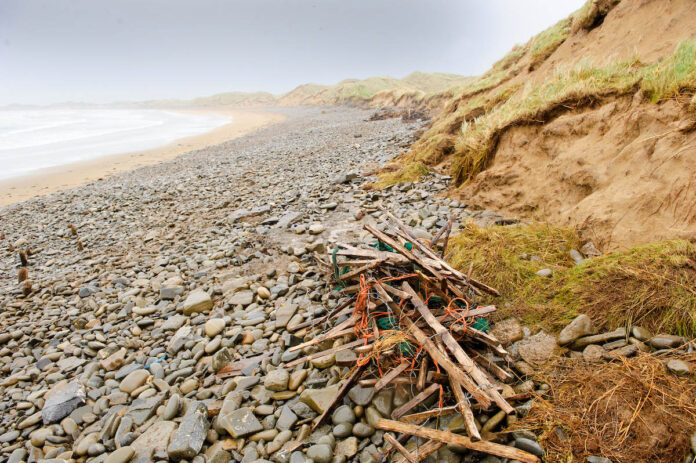COUNCIL works to mitigate coastal erosion and flood management were outlined to members at a recent meeting of West Clare Municipal District, writes Conor Clohessy.
From coastal erosion to flood management, the local authority outlined a range of plans for the creation of safer coasts and floodplains all around the regions of West and North Clare.
Firstly, schemes through the Catchment Flood Risk Assessment and Management (CFRAM) Programme are close to being carried out county-wide, according to Clare County Council’s chief engineer Seán Lenihan.
In a statement at the West Clare Municipal District meeting on January 18, Lenihan was asked to provide details on the progression of these schemes by Cllr Gabriel Keating.
Mr Lenihan thanked many of the councillors who were involved in acquiring agreement from landowners in Clonahinshee, where plans for a flood relief scheme have been in place for quite some time and had proven problematic due to said landowners not being local and appearing otherwise unavailable.
Mr Lenihan said: “We’re also delighted to be moving forward at White Strand, as this was an area that sustained a lot of damage during the storms of 2014. In Dublin, we’ve been given the green light to go ahead, so now we need to provide detail of the design before going back to the Dáil for further funding.”
Lough Donnell is another risk area in terms of flooding, and the relief scheme has been stalled many times due to concerns about the local environment and ecology but is now moving forward; Lenihan remarked that if nothing is done about the flooding, everything good about the lough will be destroyed.
The sea wall at Kilkee was seriously damaged in 2014, with over €2.5 million being spent since to rebuild the wall and surrounding terraces – now, there is risk of the sea wall collapsing soon, and Clare County Council are currently engaging with the Office of Public Works (OPW) to secure more funding to intervene with and eliminate further damage.
Mr Lenihan emphasised that projects such as this do not move as quickly as he would like, due to the numerous processes involved that ensure the compliance with the Public Spending Code and that the projects will be seen to completion.
“I’m delighted to say that we also secured definite funding for schemes surrounding piers and harbours. We received €320,000 last year, which we added €80,000 to on behalf of Clare County Council. I’d like to acknowledge Senior Executive Engineers Enda McNamara and Alan Kennelly for their great work in this area.”
Regarding coastal flooding and erosion, Mr Lenihan gave mention to areas raised in concern by Councillor Keating such as Ross Bay, explaining that the OPW will assess the cost-benefit ratio of each region and if it is not reached, determinative studies are funded instead of projects themselves.
Six such studies are being carried out predominantly around West Clare, the most pressing of which is taking place in Kilbaha, from which Lenihan is waiting to hear about viable schemes through which funding can be secured.
Liscannor Bay and Lahinch are also being studied, while projects at Klihane and Spanish Point are moving towards completion as a result of such surveying.
Mr Lenihan said: “Unfortunately, Quilty likely won’t meet the criteria of its proposed scheme. However, we do accept fully that there are issues in Quilty along the road to Seafield, and we’re hoping to look at them through minor coastal road schemes that will be approved instead.”
Councillor Liam Grant expressed that he was delighted by the coastal erosion scheme progress, though he asked that the safety of swimmers and surfers is considered by works in the future – he gave special mention to Lahinch’s rock armour, emphasising that lives must be protected as well as property.
Councillor Joe Killeen also commented that projects such as those mentioned above must be highlighted more often as if they are not mentioned, they are very likely to be missed by the public.


